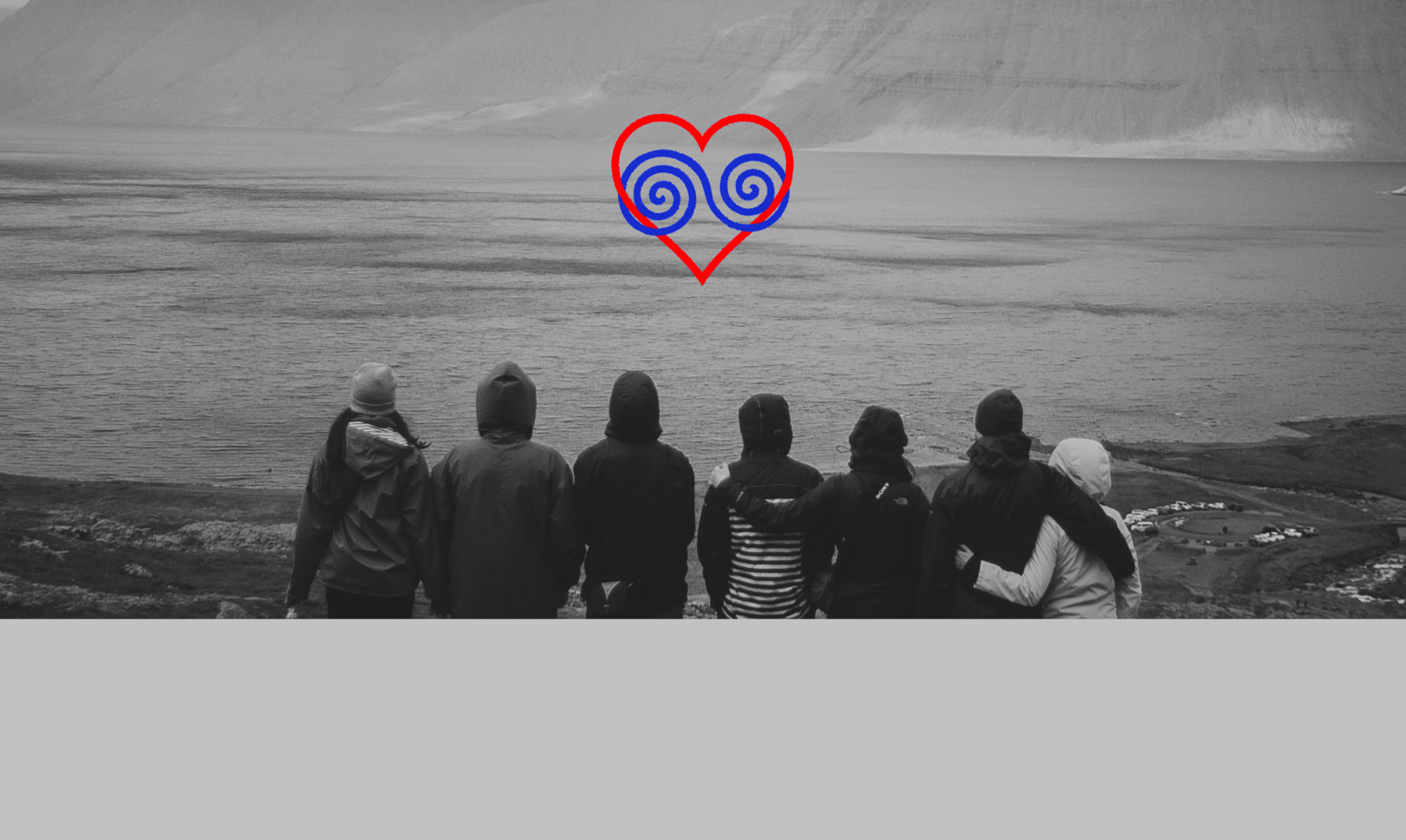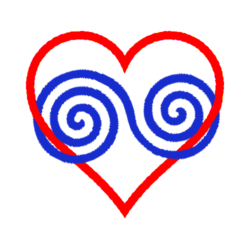Moving Chairs

Recently, in Entry 88, I expressed the hope that Oligoamory should, as much as possible, be something we do – not something that happens to us.
At the same time, I have admitted that in practice romantic connections between more than two people are most often rather unforeseen life events that – as John Lennon once put it – happen to us while we’re busy making other plans.
And that’s ok – and also proves itself to be the case in the historical context of Oligoamory, if we look at the ancestry of its “bigger sister”, Polyamory – as I have described it e.g. in Entry 49.
In that Entry I quoted the neopagan priestess and author Morning Glory Zell-Ravenheart who, out of personal life experience and because it happened to herself, seized the initiative to create a love and life model for ethical multiple relationships.
For her, too, the starting point of her vision consisted of facts that already had come to pass: Several people, who were not necessarily in a legal relationship according to existing (marital) law, had feelings for each other and wanted to reliably acknowledge their togetherness – both publicly and in front of each other.
Based on her neopagan values – such as responsibility for one’s own actions, a high degree of sincerity, and the equal worth of all creatures – she conceived a substantiated justification for conducting a committed loving relationship at eye level, even with more than two people, in which all parties could interact within a safe and predictable setting.
Why am I writing this?
Because, also historically, love, the feeling of togetherness, the bond and the “feeling of belonging to one another” emerged first – and from this arose the desire for a livable, realisable framework.
Morning Glory Raven-Zell was a practitioner, not a social scientist, who sat down in front of a drawing board one day because she wanted to give the world the philosophical blueprint for another type of relationship.
And as a practitioner, moreover, she allowed herself to be guided by actual life – and not so much by her needs when they had not yet taken tangible shape.
I emphasize this because in the wide world of multiple relationships there are nevertheless many people who would like to have such a kind of relationship for themselves – to be precise: who would like to have more loved ones for such a kind of relationship – but who do not have any yet/at the moment in their lives.
I don’t like to problematize here whether these people – in the absence of a definite relationship – are to be considered polyamorous or not. I think this is absurd, since we would then also have to ask a single monoamorous person whether he or she could legitimately call himself or herself “single”, because this would primarily signal “temporary solitude” in a world predisposed to categorical partnering.
So I say: Sure, there are “poly-singles”, simply people who can envision a life in multiple relationships, but for whom this form of relationship is not yet manifest in their everyday lives. Whether in addition one can also still be “polysingle” in a two-person relationship, that may be debatable. If the other part of that relationship is monogamous, then I would possibly agree here as well. However, if both current “relationship occupants” consider themselves as polyamorous, but currently lack other lovers to become “more than two”… That’s where the discussion quickly becomes hair-splitting – but it certainly approaches my topic today.
Because what do we need to feel “complete”?
The Swiss poet Hans Manz once wrote the following text in 1994, which he released with the title “The Chair”:
A chair,
alone.
What does he need?
A table!
On the table is bread, cheese pears,
there is a filled glass.
Table and chair,
what do they need?
A room,
in the corner a bed,
a closet by the wall,
opposite the closet a window,
in the window a tree.
Table, chair, room…
What do they need?
A human being.
The human sits on the chair at the table,
looks out of the window
and is sad.
What does s*he need?
It is quite interesting what perspectives this seemingly austere poem may provide. When I read it for the first time, my partner at that time and I had just become dog owners. So our spontaneous answer was: a dog! And we joked that the dog might topple the chair, then sit under the table, beg for bread, cheese and pears (thereby knocking over the glass by wagging its tail), frolicking through the room, sleeping in the bed at night, it would scratch itself on the closet, hop with its front paws on the window sill in order to look out, lift his leg at the tree – and the human, the human in the poem as soon as one would have added only this dog to the picture, would have in the truest sense of the word “life in the joint” and suddenly a quantity at things, to which he could attend. And thus hardly any time left for sadness.
As a “polysingle” it is sometimes us who sit sadly on the chair. And we would then like to add another human being to our picture. And if we’re still sad then…, hmm, maybe another one… Because then we would have “life in the joint”, suddenly chair, table, bread, cheese, pears, glass, room, bed, closet, window and tree would rather make sense, we could share all this and thus would hardly have time left for sadness. Sadness like in the poem, for example. Deeply buried, negative basic emotions such as sadness, anger, fear or disgust, for which we would accordingly trade an entire world in order not to have to feel them.
A dog, pardon, a life with several loved ones is apparently sometimes supposed to save us from ourselves. And if we are completely honest with ourselves, we know deep inside that they can’t really save us – well, then at least they should distract us.
Distract us from the fact that we need to feel our own feelings completely.
In Entry 6, I quoted for the first time the American author Anaïs Nin, who wrote “that each new person represents a world in us, a world not born until they arrive, and it is only by this meeting that a new world is born.” ¹
Right, that could be an opportunity as well. But much more we embrace instead rapturously – or even more almost intoxicated – this(these) new world(s), because they provide us with so many new cares that from now on we want and can devote ourselves completely only to them. And furthermore, multiple relationships also allow the collision of several worlds, so that perhaps on top of that a calling as a facilitator, tightrope walker or even manager is arising for us. So there will be no time left to feel one’s own feelings completely, to be compelled to feel them…
From my own experience I can say that this distraction, which can even maintain the illusion of “salvation” (from one’s own suffering) over a long period of time, certainly works for quite a while. Whereby the word “work”, which since the 20th century has been used predominantly for objects and devices, is almost emblematic.
Because good – and by “good” I always mean succeeding – Oligo- or Polyamory will never occur this way.
The Swiss psychiatrist C. G. Jung, who intensively studied our inner world of symbols and archetypes, wrote already in 1934²:
»To love someone else is easy, but to love what you are, the thing that is yourself, is just as if you were embracing a glowing, red-hot iron; it burns into you and that is very painful.
Therefore, to love somebody else in the first place is always an escape which we all hope for, and we all enjoy it when we are capable of it.
But in the long run, it comes back on us. You cannot stay away from yourself forever. You have to return, have to come to that experiment, to know whether you really can love. That is the question – whether you can love yourself. And that will be the test.«
By which C. G. Jung expresses that we can thus “add” nothing at all to the picture of chair, table, bread, cheese, pears, glass, room, bed, closet, window and tree, so that the human being next to it is no longer sad. Even if s*he would fill the room with more people, none of them could ensure that at the same time and as if by magic “love” would also appear in this room.
Rather, the individual in that picture would have to “put something into it” or, even better, rediscover it – in its self.
And what that is is quite analogous to the root of succeeding Polyamory: There it is love; concerning ourselves, it is self-love accordingly. There it is the feeling of togetherness, concerning us it is the feeling of being at one with oneself, of owning oneself. There it is connectedness, concerning us it is the certainty that we can exist out of ourselves due to our inalienable self-worth. There it is the “feeling of belonging to each other” – with us it is a feeling of identity and significance.
However, if we approach Poly- or Oligoamory like the sad human in the room, there is considerable danger that we will let our desires, which arise from unmet needs, design the plan on the draft board for our own version how a multiple relationship should look like.
And unfulfilled needs unfortunately quickly express themselves in the shape of neediness, which manifest in such a way that potential loved ones are unceremoniously stuffed into (all) those need gaps through which our unfelt basic feelings continually want to surface – and due to this unpleasant sensation of a diffuse loss of energy we constantly reduce our satisfaction with life (see also my metaphor of the “need barrel” in Entry 58).
Consequently, no “patch” of this kind will ever be able to adequately address the actual void beneath it.
Today, therefore, I wish us to once again take the path of the greatest possible courage, this time to take the very first fundamental step towards a life in healthy (multiple) relationships:
To accept and love this thing that we are ourselves.
To allow ourselves to feel our feelings fully.
To hold our own hand, and choose neither Poly- nor Oligoamory as a way out when things in us are still on fire.
¹ Quote from: Anaïs Nin, Diaries 1929-1931 “Can I Love Two Men?”
² Zarathustra Seminary page 1473 – C.G. Jung on Nietzsche’s Zarathustra (1934)
The text to Morning Glory Raven-Zell’s article with the first outline on Polyamory (as it appeared in the magazine “Green Egg” at that time in 1990) HERE.
Thanks to Renè Müller on Unsplash for the photo!

